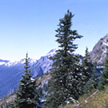| Report Documents
|
|
|
| |
| Map Plotfiles
|
-
No files of this type available
|
| |
| Data Files
|
-
No files of this type available
|
| |
| Digital Map Files
|
-
No files of this type available
|
| |
| Image Document
|
-
No files of this type available
|
| |
| Video Files
|
-
No files of this type available
|
| |
|
All Documents
|
|
|
| Contact
|
|
-
If you have any questions on the information presented, or require additional report data or attachments, please contact the Report Contact
|
|
|
The recent invasion of the quagga and/or zebra mussel beyond the 100th Meridian has been
described by Mackie and Claudi (2010). They examined the distribution of dreissenids and their
rates of invasion beyond the 100th Meridian since the discovery of the quagga mussel in 2007 in
California, Nevada and Arizona and in Colorado in 2008.
|
Author: Gerald L. Mackie
|
|
|
Date Published: Sep 2010
|
Report ID: 19917
|
Audience: Government and Public
|
Mackie and Claudi (2010) describe the devastation of native unionids, especially species at risk, by dreissenids in numerous watersheds in North America. The rapid dispersal of dreissenids
beyond the 100th Meridian is causing concern of its invasion into BC watersheds, especially those that support populations of mussel species at risk, such as the Rocky Mountain Ridged Mussel (RMRM), Gonidea angulata, which is presently listed by COSEWIC as special concern. Since the RMRM is common throughout most of Okanagan Lake, there is concern that if the water quality of the lake will support massive infestations of zebra and/or quagga mussels, the
dreissenids may kill existing populations of the RMRM.
Mackie and Claudi (2010) describe methods for predicting the level of infestation by dreissenids
based on water quality. The most common parameters used (and listed in order of their predictive value from most reliable to less reliable) are: 1, calcium content; 2, alkalinity; 3, pH; 4, total hardness; 5, nutrient (total phosphorous, total nitrogen) levels; 6, chlorophyll a levels; 7, Secchi depth; 8, dissolved oxygen content; 9, conductivity (and/or salinity, total dissolved
solids); 10, mean annual temperature. Although mean annual values of each of the parameters can be used, temporal (e.g. seasonal) and spatial (e.g. depth, horizontal) variations lend more certainty to the predictions of mussel survival and potential densities. However, means and ranges of these water quality parameters can be very useful for a rapid assessment of infestation potential.
|
Report Type
| |
Fish and Aquatic Habitat Information |
| |
Subject
| |
Region - Okanagan |
| |
Fish and Fish Habitat - Lake |
| |
Fish and Fish Habitat - Management |
| |
Watershed Groups - 310 - Okanagan |
| |
|
|
